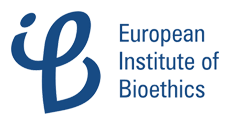Judgement of the Court in case Oliver Brüstle v Greenpeace e.V., 18 October 2011, C-34/10
A process which involves removal of a stem cell from a human embryo at the blastocyst stage, entailing the destruction of that embryo, cannot be patented.
The use of human embryos for therapeutic or diagnostic purposes which are applied to the human embryo and are useful to it is patentable, but their use for purposes of scientific research is not patentable.
_____________________________________________________
A landmark decision by the European Court of Justice marks a step forward in legal recognition of the dignity of the human embryo. It settled a long-simmering legal battle by ruling that research involving the destruction of embryos cannot be patented.
Brüstle is a leading German stem cell scientist who holds a patent on neural cells produced from human embryonic stem cells.
The decision does not prevent scientist from experimenting on human embryos, but they will not be able to patent their work in the European Union, making it difficult to commercialise their work.
The ruling came as no surprise in the light of a 1998 biotechnology directive from the European Union which states unequivocally that no patents should be granted if their "commercial exploitation would be contrary to 'ordre public' or morality", in particular, "uses of human embryos for industrial or commercial purposes".
The directive did not mention human embryonic stem cells, as the technology had not been developed at that stage. But in 2005, a resolution of the European Parliament declared that "the creation of human embryonic stem cells implies the destruction of human embryos and... therefore the patenting of procedures involving human embryonic stem cells or cells that are grown from human embryonic stem cells is a violation".
Brüstle's view was that the directive had not defined what an embryo is. He believed that an "embryo" comes into being 14 days after fertilisation. Since his embryonic stem cells were being taken from five or six day old embryos, they could not be banned by the directive.
But this line of reasoning failed. The court supported a common sense understanding of an embryo and declared that "any human ovum must, as soon as fertilised, be regarded as a 'human embryo' if that fertilisation is such as to commence the process of development of a human being".
Furthermore, according to the directive, human biological material deserves to be treated with dignity. The Court quoted the directive : "Although it seeks to promote investment in the field of biotechnology, use of biological material originating from humans must be consistent with regard for fundamental rights and, in particular, the dignity of the person."
- patent
- embryo
- Germany
- scientific research
